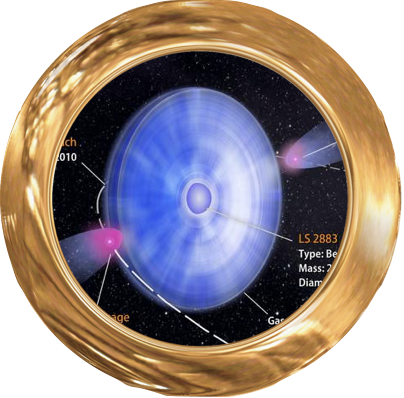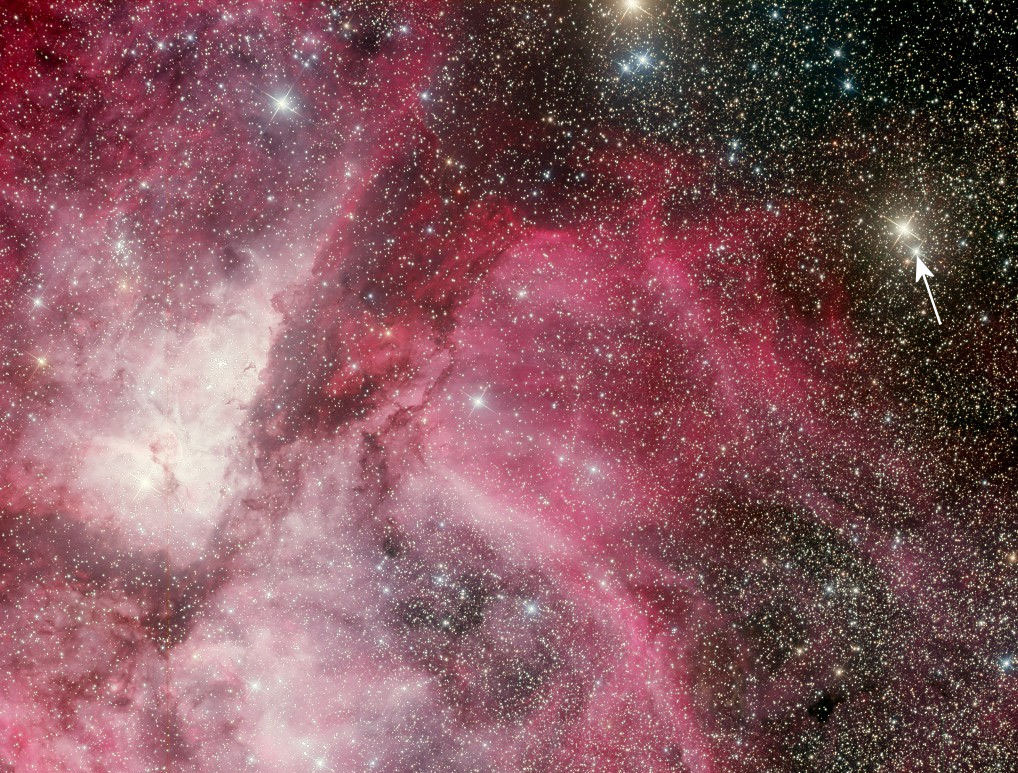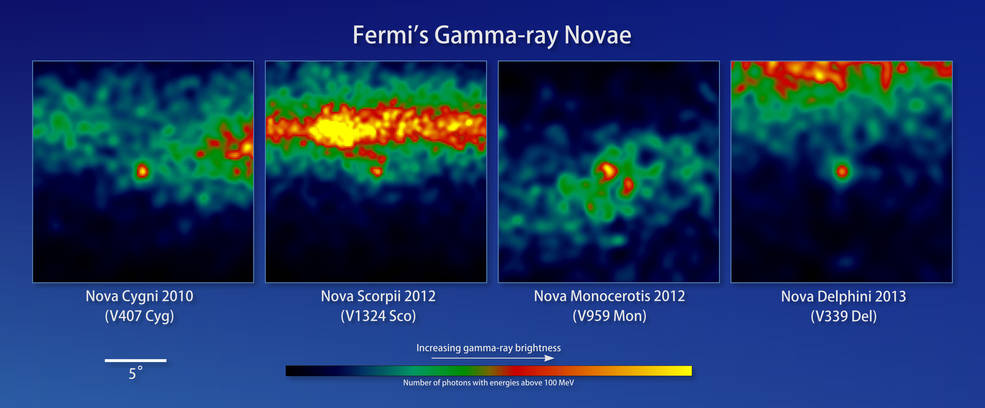Fermi Friday - October 05, 2018

Galactic Surprises: Things That Go Bump in the Gamma Rays
Posted by Teddy Cheung (Naval Research Laboratory) and Tyrel Johnson (George Mason University)
Some pairs of stars sparkle in gamma rays
The majority of stars in our Galaxy are actually found in pairs, or "binaries" in astronomy jargon. Each distant binary's nuanced dance can appear differently to observers on Earth. Amongst the menagerie of Galactic gamma-ray sources seen by Fermi over the past decade, it has discovered some pairings that produce remarkable outbursts lasting days.
One peculiar pairing involves a bright, blue, fast-spinning (Be-type) star named LS 2883 and an even faster-spinning neutron star (a pulsar named PSR B1259-63). Their highly lopsided (eccentric) orbit destine them to spend most of their time apart, periodically meeting for a close passage for only a few months every three years. In the first such closest-approach Fermi witnessed in 2010, they sparkled most in gamma rays as they separated. They behaved similarly when they neared again in 2014 and 2017, producing the brightest and most-pronounced outbursts after the last passage.
Astronomers recently recognized that the PSR B1259-63 / LS 2883 pair is not unique in our Galaxy, with a newly-discovered system named PSR J2032+4127 / MT91 213. Here, they pass close only every 50 years, with their most-recent closest encounter occurring in November of 2017. For this once every half century event, telescopes in space and ground-based observatories across the globe, covering the electromagnetic spectrum from radio waves to the highest energy gamma rays, watched carefully. While Fermi did not detect any additional gamma-rays, other observatories saw the binary pair flare (Swift in X-rays, ground-based Cherenkov telescopes in very high-energy gamma-rays). Likely other similar pairings in our Galaxy remain to be seen.

From: Announcing Nova Carinae 2018
Fermi has more frequently found gamma-ray outbursts from a more common pairing involving white dwarf stars in binary systems, producing powerful explosions. Here, the gravitational tug of the white dwarf continuously draws matter from its companion onto its surface. The stellar companion to the white dwarf span all types, and with a variety of orbits. The most common classical novae involve close binaries and their sudden bright optical appearances have been known since the dawn of astronomy as stellar novae. See example of Nova Carinae 2018.
Fermi found that when many of the brightest novae are discovered visually, they are accompanied by bright and luminous gamma-ray outburst as well. The gamma-ray outbursts are probably produced in shock waves as the white dwarf skin is ejected or may be due to fast and slow moving winds interacting.
In contrast to the more powerful supernovae, the stellar pair remains after these explosions. As far as we know, some novae explosions repeat anywhere from every few years to many decades, but the majority take centuries and longer to explode again.
The binarity of these Galactic systems is an important ingredient in producing gamma-ray outbursts. Fermi showed us how explosive and energetic these phenomena can be.




